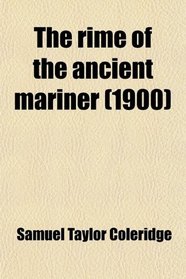Search -
The rime of the ancient mariner (1900)
The rime of the ancient mariner - 1900
Author:
Purchase of this book includes free trial access to www.million-books.com where you can read more than a million books for free. This is an OCR edition with typos. Excerpt from book: III. THE COMPOSITION OF THE POEM In the curiously multiform experience of Coleridge, the flowering time of his poetic genius is limited to a single brief peri... more »
Author:
Purchase of this book includes free trial access to www.million-books.com where you can read more than a million books for free. This is an OCR edition with typos. Excerpt from book: III. THE COMPOSITION OF THE POEM In the curiously multiform experience of Coleridge, the flowering time of his poetic genius is limited to a single brief peri... more »
ISBN-13: 9780217132459
ISBN-10: 0217132456
Publication Date: 8/8/2009
Pages: 130
Rating: ?
ISBN-10: 0217132456
Publication Date: 8/8/2009
Pages: 130
Rating: ?
0 stars, based on 0 rating




